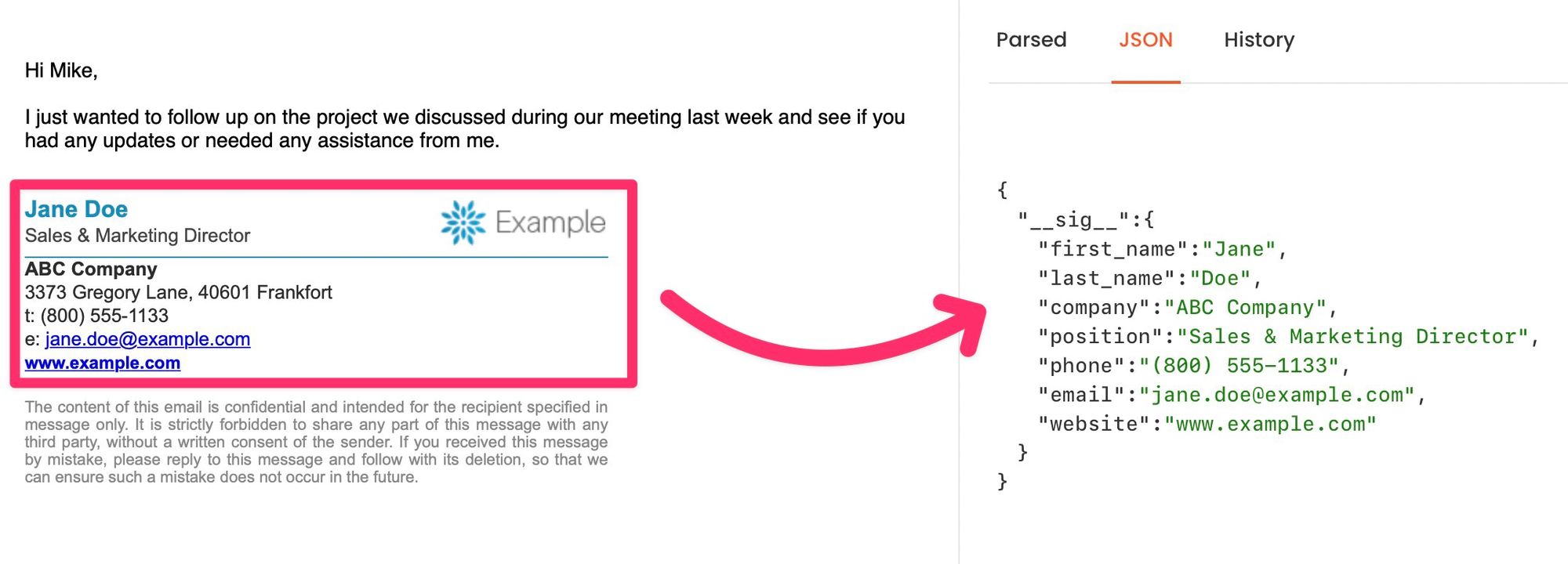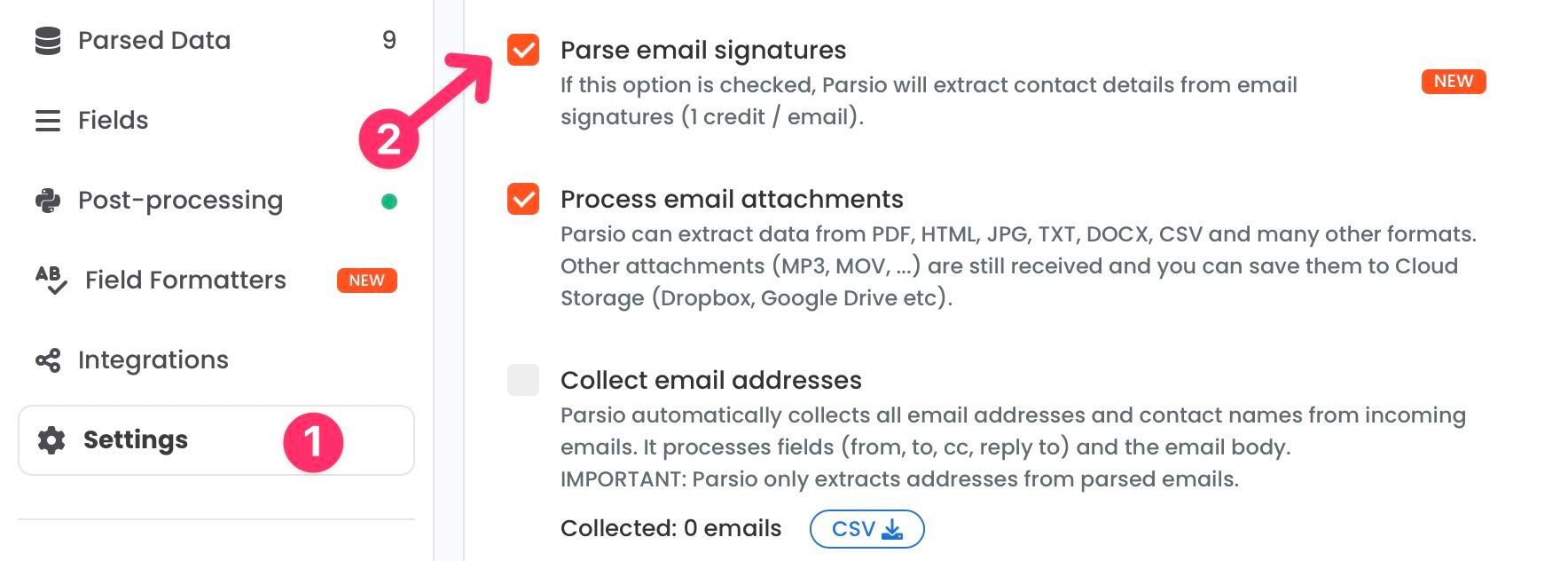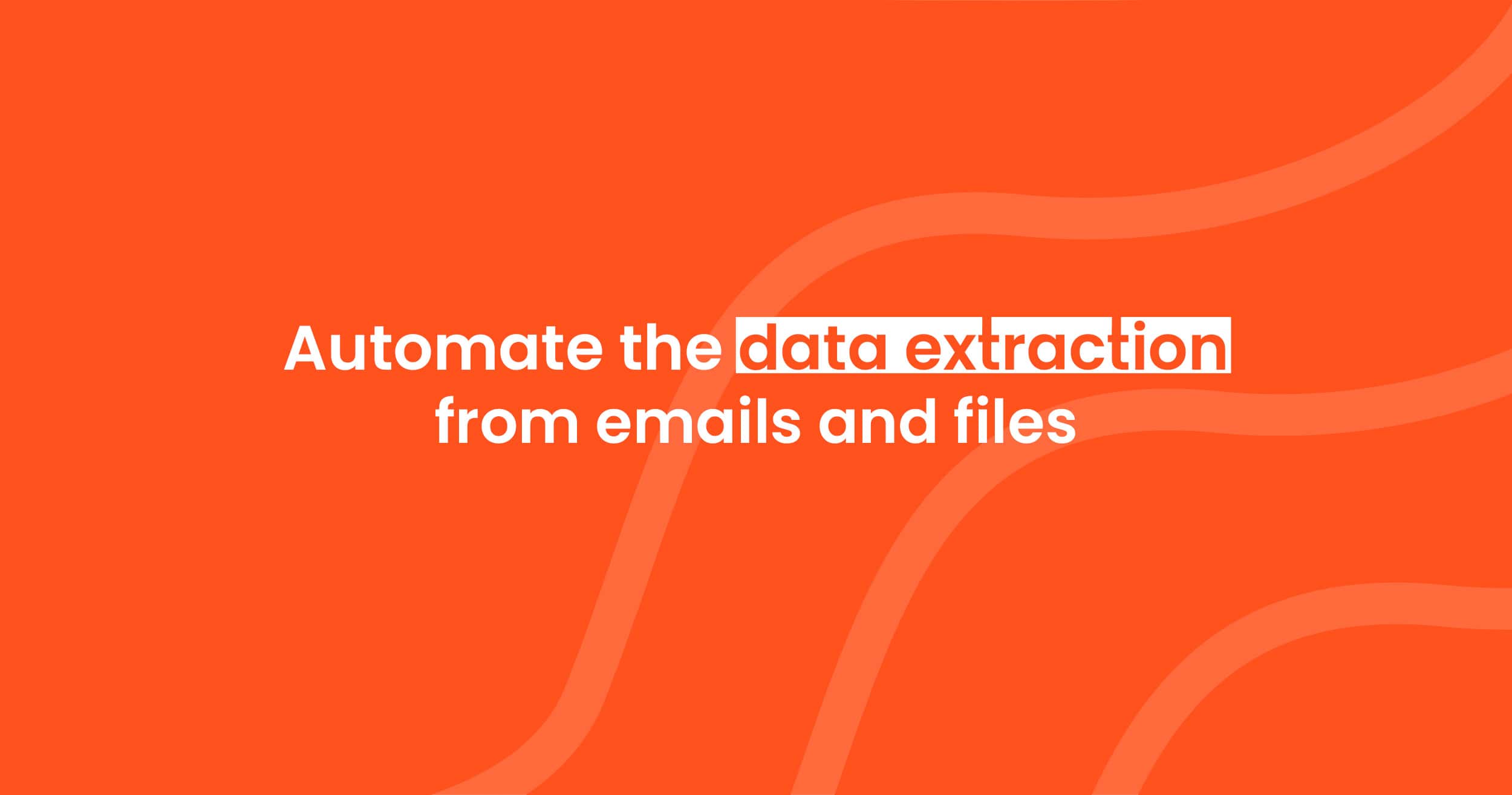Parsing Email Signatures: The Ultimate Guide

Email signatures have become an essential component of business communication, providing essential contact information such as names, job titles, phone numbers, and email addresses. However, the unstructured nature of email signatures, combined with the lack of standardization, makes it difficult to find and extract the necessary information.
Email signature parsing, therefore, has become a critical tool for businesses to collect, organize, and analyze data quickly and efficiently. In this ultimate guide, we'll explore what an email parser is, why parsing email signatures is necessary, the problem with email signatures, and the best solutions for parsing email signatures.
What is an Email Parser?
An email parser is a software tool that extracts specific data from emails and automatically organizes it into a structured format. Email parsers can identify and extract any text data such as names, addresses, phone numbers, order details and more. Therefore an email parser can help to automate your workflow and significantly reduce data entry operations.
The best email parsers use a combination of traditional algorithms, machine learning, and natural language processing to analyze and categorize data. By leveraging these technologies, email parsers can provide accurate and efficient processing of emails.
Why Parsing Email Signatures?
Email signatures contain valuable information such as names, job titles, phone numbers, email addresses, and physical addresses. Parsing email signatures can help businesses save time and improve data accuracy. By automatically extracting data from email signatures, businesses can reduce errors and minimize manual data entry, increasing efficiency and productivity.
Email signatures are a goldmine of valuable information. By parsing email signatures, you can:
- Automate contact data extraction and enrich your contact database
- Improve customer relationship management processes
- Enhance marketing efforts and segmentation
- Streamline communication and collaboration within your organization

The Problem with Email Signatures
Identifying an email signature may seem like an easy task for humans, but it can be challenging for machines.
The problem with email signatures is that there is no standardization for how they are structured and formatted. As a result, email parsers often have difficulty identifying and extracting the necessary information from email signatures.
Parsing email signatures comes with a unique set of challenges:
- Lack of standardization: Email signatures come in various formats, with no universally accepted structure.
- Multilingual content: Signatures may contain information in multiple languages, making it challenging to parse accurately.
- Non-text elements: Signatures often include images, logos, and social media icons that can complicate the parsing process.
- Inconsistency in information: Some signatures contain extra information, while others might be missing crucial details.
How Email Signature Parsing Works
Email signature parsing involves two main tasks: finding the signature and extracting data. Finding the signature involves identifying the relevant part of the email where the signature is present. Extracting data involves parsing the information and organizing it in a structured format.
Finding the Signature
Email signature parsing begins by locating the signature block in an email. A signature block typically appears at the bottom of an email and contains essential contact information such as names, titles, phone numbers, and email addresses. Traditional email parsers use a set of rules to locate the signature block in an email. However, because there is no standardization for email signatures, traditional email parsers often fail to find the necessary information.
Extracting Data
Once the signature block has been located, the email parser must extract the necessary information and organize it into a structured format. This process involves identifying the relevant data points such as names, titles, phone numbers, and email addresses. The email parser then categorizes the information and organizes it into a structured format that can be easily imported into other applications such as CRMs or spreadsheets.
Techniques for Parsing Email Signatures
Various techniques can be employed to parse email signatures, ranging from simple pattern matching to advanced machine learning algorithms.
Regular Expressions
Regular expressions (regex) are a powerful tool for searching and manipulating text using patterns. They can be used to extract specific information from email signatures by identifying patterns such as email addresses, phone numbers, and URLs. However, regular expressions have limitations when dealing with complex or unstructured signatures, making them less effective for parsing a wide range of signature formats.
Mailgun's Open-Source Library Talon
Talon is an open-source Python library developed by Mailgun for extracting information from emails, including quotations and signatures. Talon uses a combination of heuristics, regular expressions, and machine learning.
As our tests have shown, Talon works relatively well in simple cases, but it may fail to identify signatures in more complex cases. Our tests showed a recognition rate of about 25-30%, which is not ideal for businesses that require high accuracy in their data extraction process.
Moreover, Talon is primarily designed to identify the location of email signatures within an email and extract the signature text. It does not offer a solution for parsing and structuring data from the signature.
This is where AI-powered email signature parsing tools like Parsio can be a better solution.
Our Solution: AI-Powered Email Signature Parsing
At Parsio, we offer an advanced AI-powered approach to email signature parsing that can accurately locate and extract data from email signatures with high precision.
Our AI technology can identify a wide range of data points within email signatures, including contact information, job titles, company details, and more.

With the latest AI tech stack, Parsio can identify signatures and extract data from them with high accuracy, eliminating the need for manual data entry. Parsio can also integrate with various applications like Zapier and Google Sheets, allowing businesses to export the parsed data in real-time.
Conclusion
Email signature parsing is a valuable tool for businesses looking to streamline their workflow and improve data accuracy. With AI-powered tools like Parsio, parsing email signatures has become more efficient and accurate than ever before. Businesses can easily extract the necessary information from emails without worrying about the format or structure of the email signature.
Read next:
- What is an Email Parser? The Ultimate Guide to Email Parsing
- PDF Data Extraction and OCR: The Ultimate Guide

